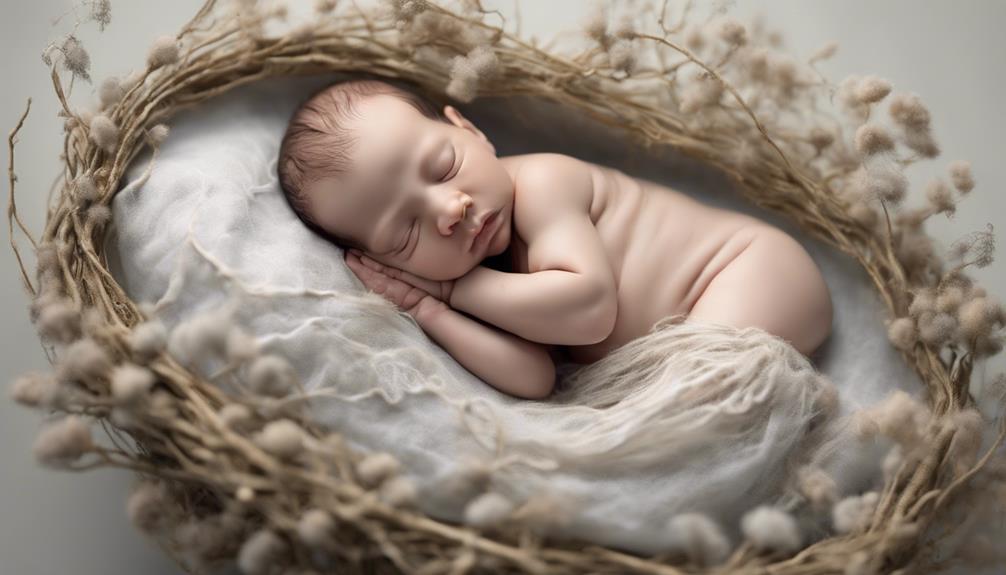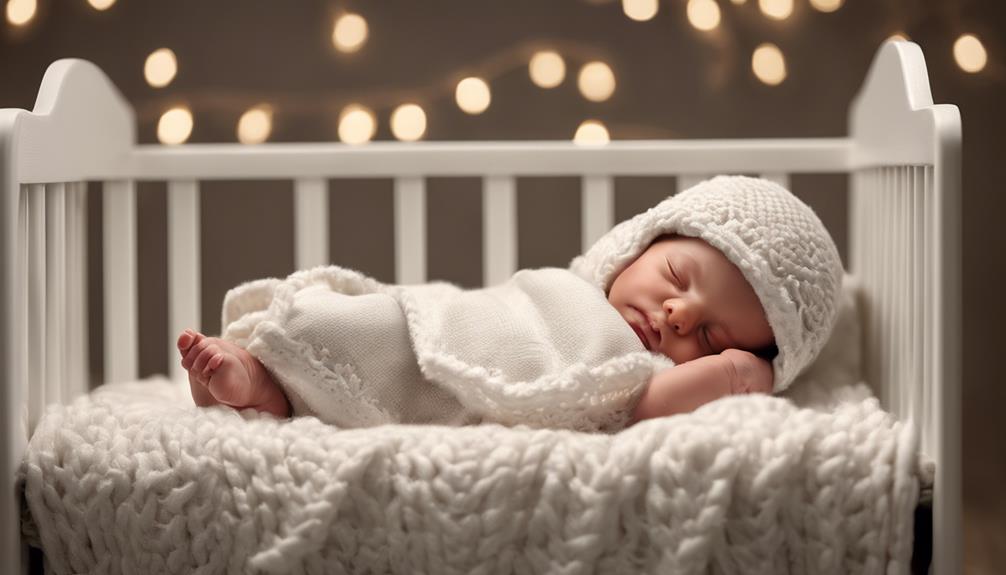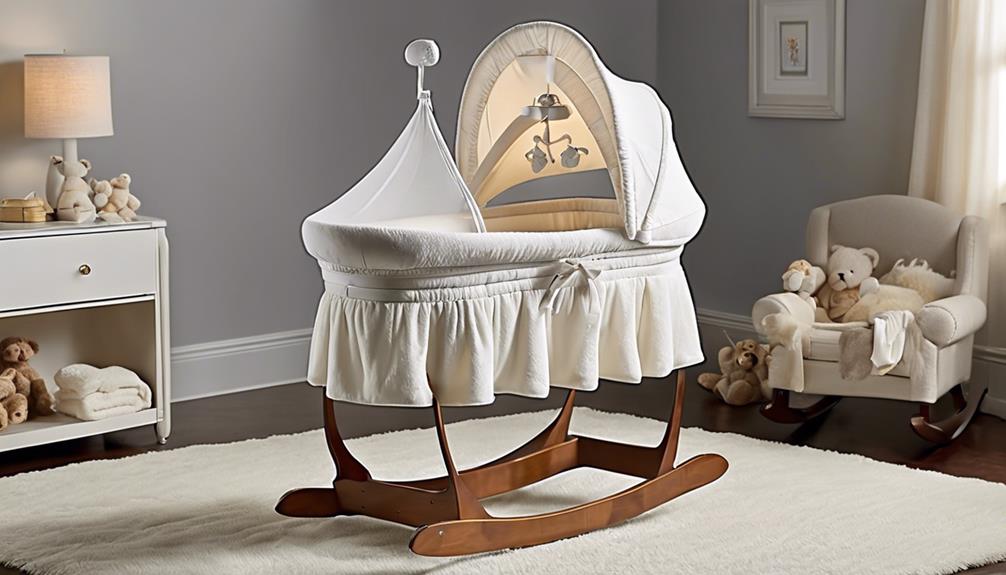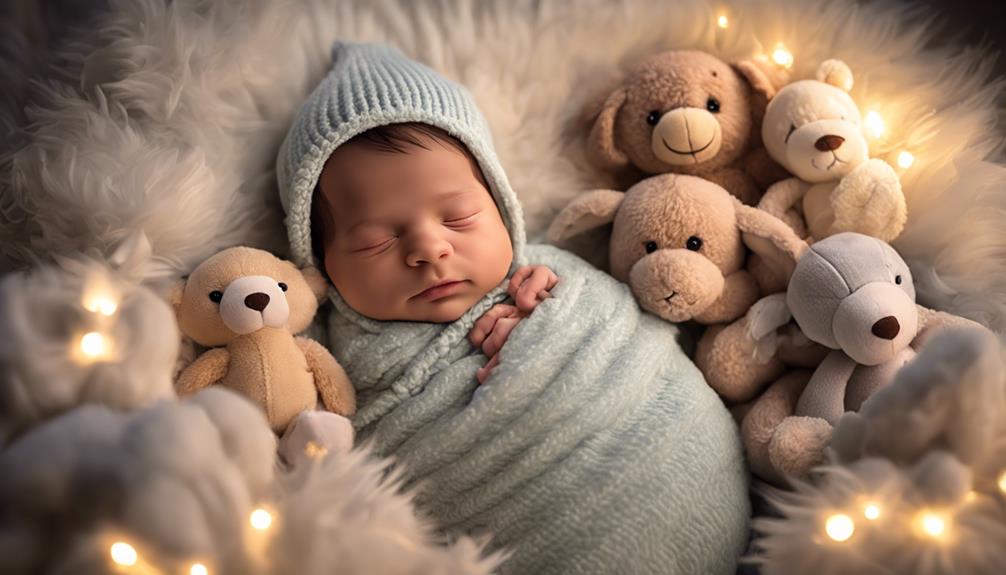As we navigate the mysterious world of newborn sleep, we can't help but wonder why those tiny bundles of joy sometimes shake in their slumber. Is it just a normal part of their development, or could there be something more to it?
Let's explore the intricate reasons behind these subtle movements that might give us insights into our little one's well-being and provide a sense of understanding in the midst of parental concerns.
Key Takeaways
- Newborn shaking aids in neurological development and reflex maturation.
- Room temperature affects body heat redistribution during sleep shaking.
- Dreaming activity enhances brain development and muscle coordination.
- Febrile seizures triggered by fever, not indicative of chronic conditions.
Developmental Reflexes
Understanding developmental reflexes like the Moro reflex can provide valuable insights into a newborn's neurological development and responses.
The Moro reflex, often seen when a newborn is sleeping, is an involuntary startle response triggered by sudden movements or noises. It helps the baby react to disturbances during sleep by extending their arms, legs, and fingers before bringing them back in a hugging motion.
This reflex, essential in the early stages of life, allows infants to adapt to unexpected changes in their environment. However, as the baby's nervous system matures, the Moro reflex typically diminishes by around 6 months of age.
Observing and understanding these reflexes not only offer a glimpse into the intricate workings of a baby's neurological development but also aids parents and caregivers in comprehending their newborn's responses and behaviors during sleep.
It's a natural and essential part of a baby's early life, showcasing the complexity and beauty of their developing nervous system.
Immature Nervous System

An immature nervous system in newborns often leads to spontaneous muscle movements and twitches during sleep, including jerking or shaking motions. These involuntary movements are a common occurrence in babies as their nervous system is still in the process of maturing and establishing proper connections.
The twitching or shaking observed in infants while they sleep is a result of their developing nervous system adjusting and processing sensory input. It's crucial for parents to understand that these movements are a normal part of a newborn's early development and are typically harmless.
As your baby grows, their nervous system will continue to mature, and you may notice a decrease in these involuntary movements over time. Providing a safe and comfortable sleep environment for your little one while understanding that twitching and muscle twitches during sleep are often just a natural part of their neurological development.
If you have any concerns about your baby's movements, always consult with your pediatrician for guidance and reassurance.
Temperature Regulation
As parents, we comprehend the importance of ensuring our newborns are comfortable while they sleep.
Body heat distribution, an immature nervous system, and room temperature variations play a significant role in how our babies regulate their temperature during sleep.
Understanding these factors can help us create a cozy sleep environment that supports our newborns' temperature needs.
Body Heat Distribution
Shaking in sleep serves as an important mechanism for newborns to effectively redistribute body heat. Newborns, with their developing systems, rely on this natural shaking response to regulate their temperature while sleeping. This physiological process is essential for maintaining a stable body temperature in infants.
Since newborns' temperature regulation mechanisms aren't fully developed, the shaking action helps in distributing body heat evenly. So, if you notice your sleeping infant shaking, know that it's their body's way of ensuring they stay cozy and comfortable.
Embrace this normal behavior as your baby adjusts to the world outside the womb, using shaking to keep warm and cozy throughout their slumber.
Immature Nervous System
The immature nervous system of newborns can sometimes result in shaking during sleep as they adapt to regulating their body temperature. It is common for newborns to experience twitching or shivering while they slumber due to their developing thermoregulation capabilities. This process is essential as their bodies learn to adjust to environmental temperatures, ensuring their comfort and well-being. Understanding the connection between an immature nervous system and newborn shaking during sleep can help caregivers provide the necessary support for their baby's development. By creating a nurturing environment that aids in temperature regulation, parents can assist their little ones in adapting to these changes and promoting a sense of security.
| Immature Nervous System | Temperature Regulation | Newborn Shaking |
|---|---|---|
| Developmental process | Adjusting to surroundings | Common occurrence |
Room Temperature Variations
Room temperature fluctuations can greatly impact a newborn's sleep comfort and may lead to shaking episodes. Newborns are sensitive to changes in their environment, and sudden variations in room temperature can disrupt their sleep by affecting their body temperature regulation.
Maintaining a stable room temperature is essential in ensuring that your baby stays comfortable throughout the night. When exposed to cold environments, newborns may experience shivering or shaking episodes as their bodies try to generate heat. Properly dressing your baby for sleep, based on the room temperature, can help prevent these shaking episodes.
Dreaming Activity

During REM sleep, newborns engage in dreaming activity that plays a pivotal role in their brain development. This stage is critical for memory consolidation and overall healthy brain function in newborns.
The twitches or shaking movements observed in babies during REM sleep are completely normal and signify active brain activity. These involuntary movements help in the development of their nervous system and muscle coordination, essential for their growth and overall well-being.
Dreaming activity triggers these movements, indicating that the brain is functioning as it should. So, if you notice your newborn shaking or twitching in their sleep, know that it's a vital part of their sleep cycle and a sign that their brain is actively developing.
Embrace these movements as a positive sign of your baby's healthy brain function and growth.
Moro Reflex
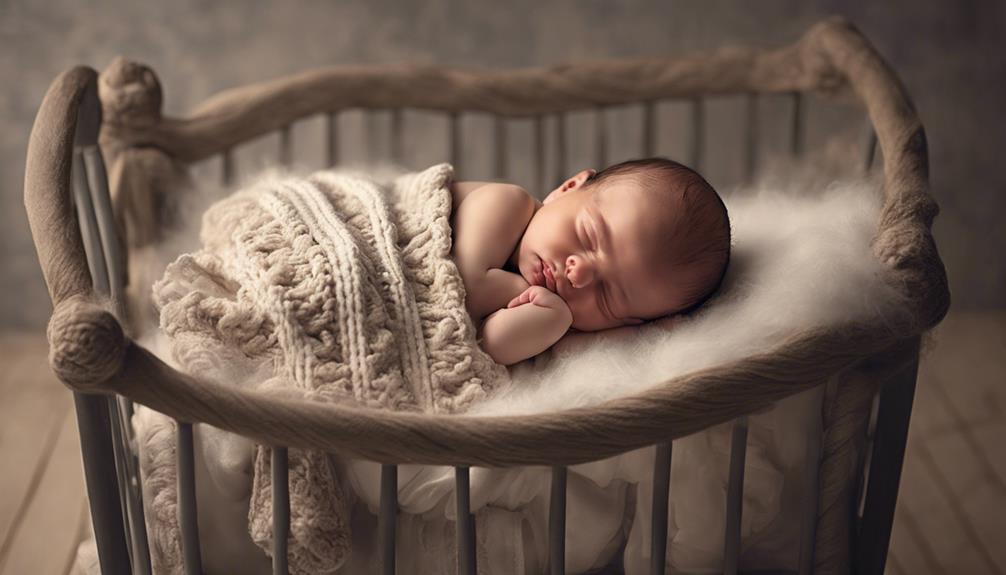
Experiencing the Moro reflex can startle newborns in response to sudden stimuli, aiding in their sensory development and reflex integration. This normal newborn reflex, also known as the startle reflex, is a fascinating mechanism that helps babies with their balance and coordination. When triggered, a baby will throw their arms out, spread their fingers, and arch their back before bringing their arms back in. This involuntary response is believed to be a primitive survival reflex, possibly assisting infants in clinging to their caregivers in the past. As a baby's nervous system matures, the Moro reflex typically diminishes by the time they are 3 to 6 months old. It's incredible to witness how these instinctual reactions contribute to a baby's early development.
| Moro Reflex | Facts |
|---|---|
| Triggered By | Sudden noise or movement |
| Response | Arms out, fingers spread, back arch |
| Developmental Role | Balance and coordination |
| Nature | Primitive survival reflex |
| Duration | Typically diminishes by 3-6 months |
Startle Reflex

Understanding the significance of the Startle Reflex can provide valuable insights into your newborn's natural responses during sleep. The startle reflex, also known as the Moro reflex, is a normal newborn reflex that causes sudden arm and leg movements. It's triggered by stimuli such as loud noises, sudden movements, or changes in position, leading to your baby shaking in their sleep.
This protective mechanism helps babies respond to unexpected sensations, resulting in twitching or startles during sleep. The startle reflex typically peaks around 1-2 months of age and decreases as your baby's nervous system matures. Researchers refer to benign neonatal sleep myoclonus, a form of myoclonus that involves movement, as a common occurrence associated with the startle reflex.
Understanding this reflex can help parents differentiate between normal reflexive movements and potential concerns during their baby's sleep. Trust the process as your newborn's startle reflex is a natural and important part of their development.
Hypoglycemia
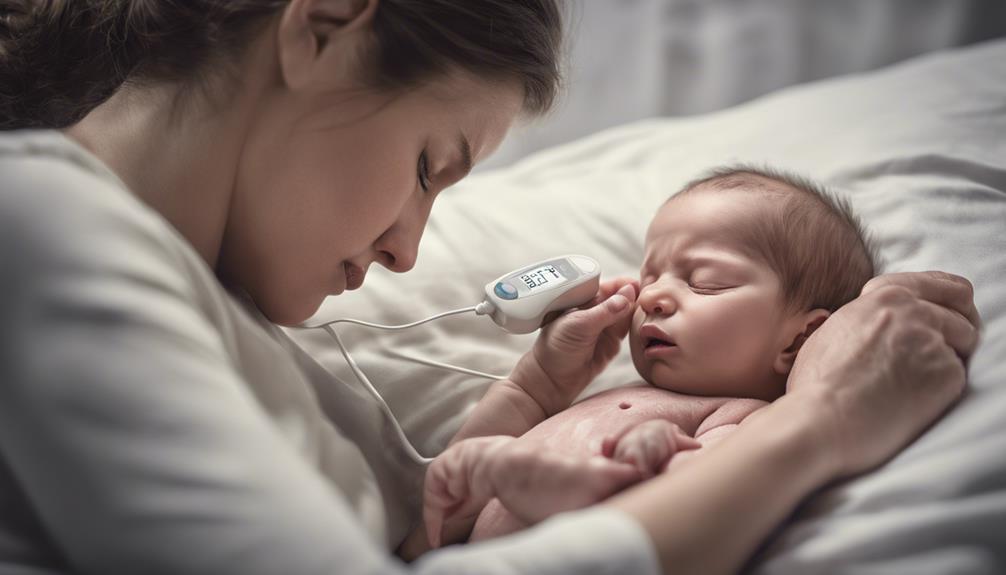
In cases of hypoglycemia, newborns may experience shaking during sleep due to low blood sugar levels. This condition puts our little ones at risk because of their immature liver function and limited glycogen reserves. Shaking in sleep because of hypoglycemia can signal inadequate feeding or underlying metabolic issues in newborns. Keeping a close eye on these symptoms to guarantee our babies stay healthy and happy. Below is a table summarizing key points about hypoglycemia in newborns:
| Keyword | Description |
|---|---|
| Hypoglycemia | Low blood sugar levels in newborns |
| Immature Liver Function | Newborns' liver not fully developed |
| Inadequate Feeding | Insufficient nourishment for the baby |
| Metabolic Issues | Underlying health concerns affecting metabolism |
Febrile Seizures

Febrile seizures can be a frightening experience for parents. Understanding the causes, symptoms to watch for, and treatment options available can help manage these situations.
It's essential to stay informed about febrile seizures, especially since they're relatively common in young children.
Knowing what to do during a febrile seizure can make a significant difference in how these episodes are handled.
Febrile Seizure Causes
Why do febrile seizures occur in infants and young children? Febrile seizures are often triggered by a sudden spike in body temperature, commonly associated with fevers in this age group. These convulsions typically affect children between 6 months and 6 years, with the highest incidence around 18 months. Most febrile seizures are brief, lasting only a few minutes, and do not usually indicate a chronic seizure disorder. While witnessing a febrile seizure can be important to understand that they are typically a response to fever and not necessarily a sign of epilepsy or other neurological conditions.
| Febrile Seizure Causes | |
|---|---|
| Spike in Body Temperature | Often associated with fevers in infants and young children |
| Peak Incidence | Commonly observed around 18 months of age |
| Response to Fever | Febrile seizures are typically a reaction to increased body temperature |
| Neurological Conditions | Typically not indicative of epilepsy or other chronic neurological disorders |
Symptoms to Watch
During a febrile seizure, it's essential to closely monitor the child for any concerning symptoms and promptly seek medical attention if the seizure lasts longer than 5 minutes.
Febrile seizures, although alarming to witness, are usually vital and common in infants and toddlers. These convulsions are often triggered by a sudden spike in body temperature, typically during an illness accompanied by fever.
While most febrile seizures are brief and resolve on their own, it's essential to stay vigilant and guarantee the child's safety during the episode. Although frightening, it's important to remember that febrile seizures don't typically cause lasting harm or signify a chronic seizure condition.
Seeking medical attention if the seizure lasts longer than 5 minutes is vital to guarantee the child's well-being.
Treatment Options Available
When managing febrile seizures in newborns, the primary focus lies on controlling fever levels and providing reassurance to both the child and caregivers. Febrile seizures, although frightening, are typically important and often don't indicate a serious underlying health issue.
The main treatment options revolve around fever management to prevent future seizures. It's vital to keep the child comfortable and monitor their temperature closely. Providing reassurance to the caregivers is also essential as they navigate through this challenging experience.
Most children outgrow febrile seizures without long-term consequences, offering hope for a positive outcome. Remember, staying calm, following the treatment plan, and seeking medical advice when needed are key steps in managing febrile seizures in newborns.
Sleep Myoclonus

Sleep myoclonus, a common occurrence in newborns, involves quick and repetitive muscle jerks during sleep. These twitches, also known as myoclonic twitches, are a normal part of infant development and play a role in enhancing sensorimotor coordination. They can be observed in various body parts such as the legs, arms, fingers, and toes, indicating the brain's engagement in sensorimotor activities even during sleep. Research suggests a correlation between sleep myoclonus and the development of motor skills in infants, highlighting the importance of these involuntary movements in early stages of life.
To provide a clearer understanding, let's delve into a table illustrating some key aspects of sleep myoclonus:
| Aspect | Description |
|---|---|
| Nature | Quick and repetitive muscle jerks during sleep |
| Body Parts Involved | Legs, arms, fingers, toes |
| Developmental Role | Enhances sensorimotor coordination and aids in motor skills development |
| Relation to REM Sleep | Often observed during REM sleep, contributing to brain's sensorimotor development |
| Common in | Newborns |
Understanding these aspects can help caregivers appreciate the significance of sleep myoclonus in their newborn's growth and development.
Normal Physiological Tremors
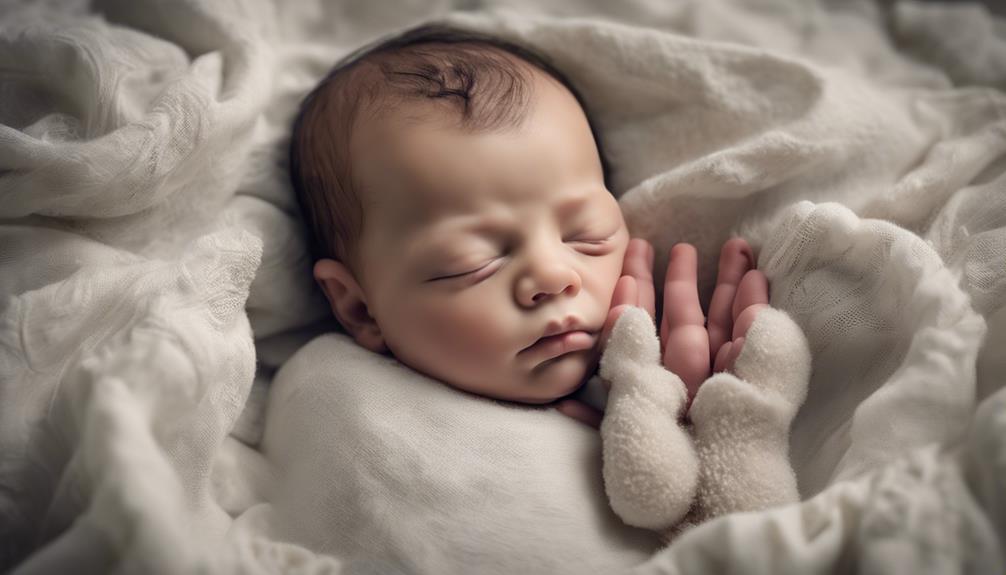
Experiencing normal physiological tremors, newborns often display subtle shaking movements as their immature nervous systems adapt to their new environment outside the womb. These tremors, commonly seen when the baby is at rest, can affect various body parts such as the hands, arms, legs, and even the chin or lips.
Factors like low birth weight or prematurity may exacerbate these tremors, along with cold stress. It's essential for caregivers to understand that most newborn tremors are a natural part of development and typically resolve on their own as the baby's nervous system matures, usually within the first few months of life.
While it can be concerning to see your little one shaking, especially during sleep, these normal physiological tremors are usually nothing to worry about. Providing a warm and comforting environment for your newborn can help reduce these tremors, allowing them to grow and thrive in their own time.
Frequently Asked Questions
Is It Normal for Newborn to Shake While Sleeping?
Yes, it is normal for newborns to shake while sleeping. This shaking is often caused by benign sleep myoclonus, a condition involving muscle jerks. Loud noises or touch can trigger this response. Periodic breathing may also contribute.
Why Does My Newborn Keep Trembling?
We understand your concern about your newborn trembling in sleep. It's important to know that these twitches are often part of their natural development. Observing them can offer valuable insights into their growth.
How Do I Know if My Baby Is Having a Seizure in His Sleep?
If your baby is having a seizure in their sleep, look for rhythmic jerking, staring, or unusual posturing. Seek immediate medical attention for sudden stiffening, repetitive movements, or loss of consciousness. Document and share details for effective treatment.
Why Is My Baby Shivering but Not Cold?
I empathize with your concern when your baby shivers but isn't cold. Babies may shiver due to the Moro reflex or normal neurological development. It's common and part of their growth process. Trust your instincts, observe, and consult a healthcare provider if worried.
Conclusion
As we navigate the mysterious world of newborn sleep, we must remember that their tiny bodies are like delicate flowers swaying in the wind. These little shakes and tremors are simply nature's way of sculpting their growing souls.
Let's embrace these movements with open hearts, knowing that our babies are blossoming into the beautiful beings they're meant to be. Watch them sleep peacefully, like gentle waves dancing in the moonlight.
